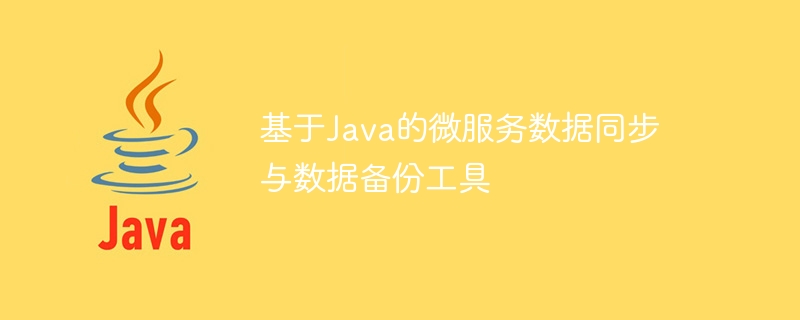

Java-based microservice data synchronization and data backup tool
With the widespread application of cloud computing and microservice architecture, various cloud services and microservices are widely used use. In this rapidly developing environment, the demand for data synchronization and data backup is also growing. This article will introduce a Java-based microservice data synchronization and data backup tool to help developers achieve efficient synchronization and reliable backup of data.
The design idea of this tool is based on the characteristics of Java and adopts the mechanism of multi-threading and message queue. Through concurrent execution of multiple threads, data synchronization can be accelerated and efficiency improved. Through the message queue mechanism, the reliability and consistency of data synchronization can be guaranteed.
Before implementing the tool, we need to introduce the relevant dependent libraries. This tool uses the Spring Boot framework to simplify the development process, and combines Spring Cloud and Spring Kafka to implement microservice collaboration and message queue functions. The following is an example of related dependencies:
<dependency>
<groupId>org.springframework.boot</groupId>
<artifactId>spring-boot-starter-web</artifactId>
</dependency>
<dependency>
<groupId>org.springframework.cloud</groupId>
<artifactId>spring-cloud-starter-stream-kafka</artifactId>
</dependency>Next, we can define the data source and data target. The data source can be a database, message queue, etc., and the data target can be other systems, databases, etc. The following is an example:
public interface DataSource {
void syncData(DataObject data);
}
public interface DataTarget {
void saveData(DataObject data);
}Then, we need to implement the logic of data synchronization. You can choose incremental synchronization or full synchronization according to specific needs. The following is an example:
public class DataSyncService {
private DataSource dataSource;
private DataTarget dataTarget;
public DataSyncService(DataSource dataSource, DataTarget dataTarget) {
this.dataSource = dataSource;
this.dataTarget = dataTarget;
}
public void syncData() {
List<DataObject> dataList = dataSource.getData();
for (DataObject data : dataList) {
dataTarget.saveData(data);
}
}
}Finally, we need to configure the message queue and message listener to achieve message consumption and data synchronization. The following is an example:
@Configuration
@EnableBinding(Sink.class)
public class DataSyncMessageListener {
@Autowired
private DataSyncService dataSyncService;
@StreamListener(Sink.INPUT)
public void receiveMessage(DataObject data) {
dataSyncService.syncData(data);
}
}
Using this tool is very simple. You only need to introduce relevant dependencies, configure the data source and data target, and then call the corresponding method. Can. The following is an example:
public class Main {
public static void main(String[] args) {
DataSource dataSource = new DatabaseDataSource();
DataTarget dataTarget = new MessageQueueDataTarget();
DataSyncService dataSyncService = new DataSyncService(dataSource, dataTarget);
dataSyncService.syncData();
}
}In the above example, we use the database as the data source and the message queue as the data target. By calling the syncData() method, the data in the database can be synchronized to the message queue.
Through the above examples, we can see the development process of Java-based microservice data synchronization and data backup tools. Through the mechanism of multi-threading and message queue, efficient data synchronization and reliable data backup can be achieved. Developers can customize their own data synchronization and backup solutions based on specific needs. I hope this article can be helpful to everyone.
The above is the detailed content of Java-based microservice data synchronization and data backup tool. For more information, please follow other related articles on the PHP Chinese website!




